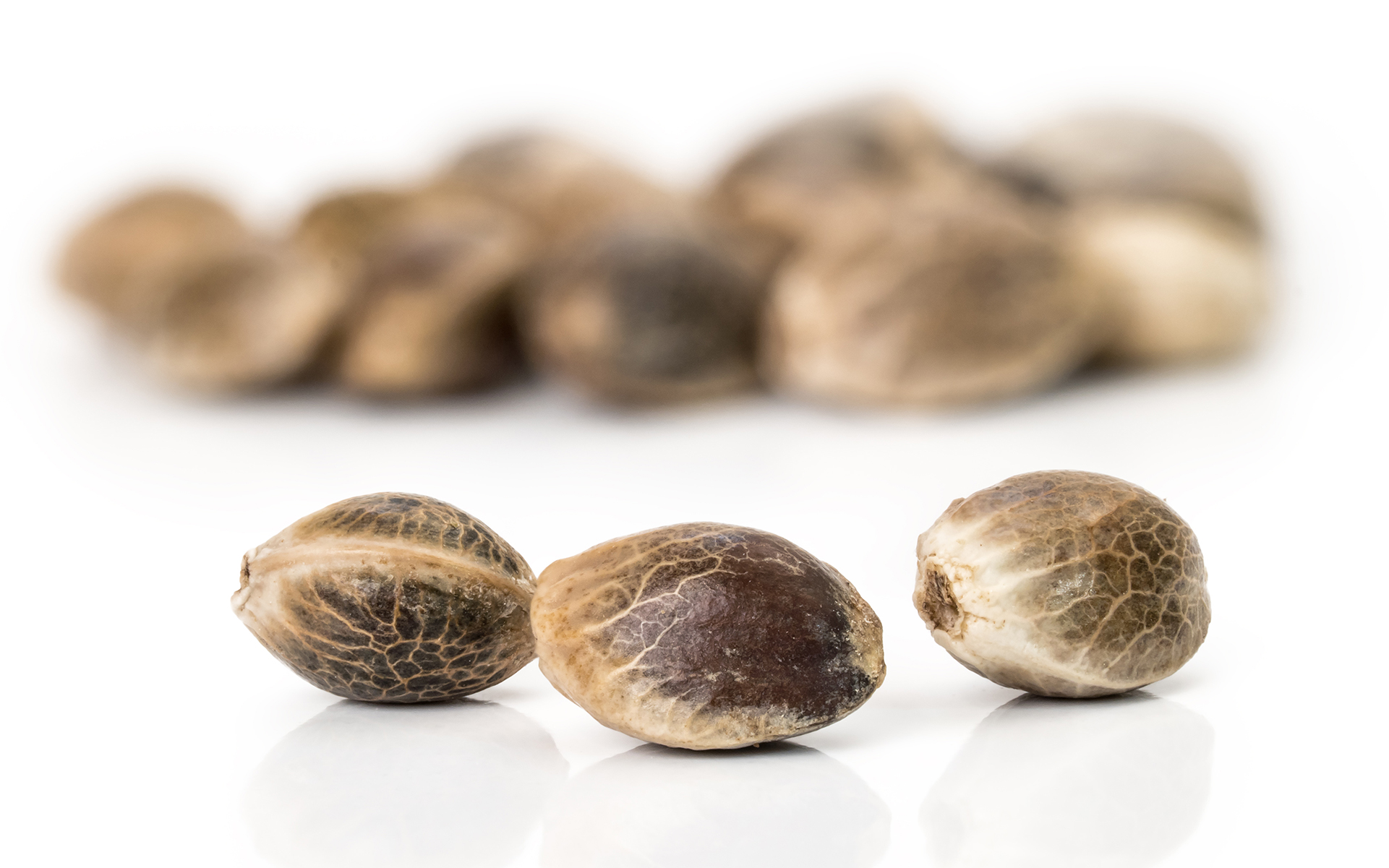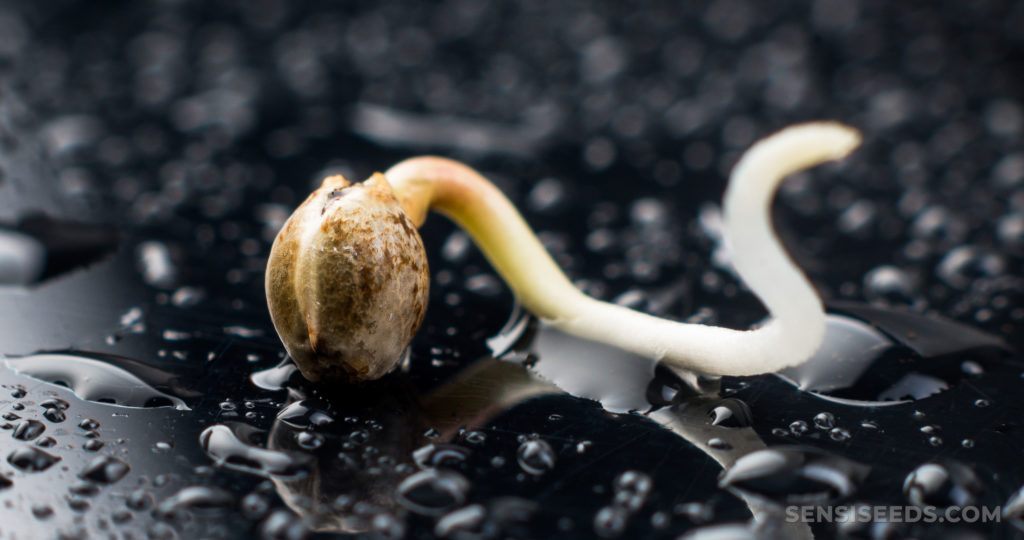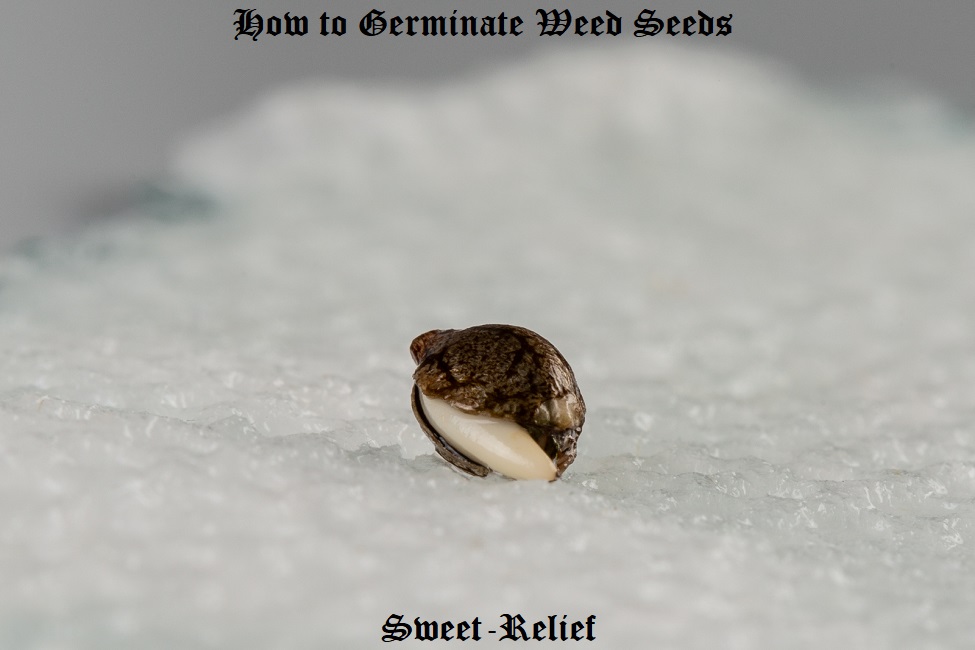Cannabis is grown from one of two sources: a seed or a clone. Seeds carry genetic information from two parent plants and can express many different combinations of traits: some from the mother, some from the father, and some traits from both.
In commercial cannabis production, generally, growers will plant many seeds of one strain and choose the best plant. They will then take clones from that individual plant, which allows for consistent genetics for mass production.
If cannabis is legal in your state, you can buy seeds or clones from a local dispensary, or online through various seed banks.
Cannabis seeds vs. clones
For the typical homegrower, it may be easier to obtain cannabis seeds rather than clones. Growing from seed can produce a stronger plant with more solid genetics.
Plants grown from seed can be more hearty as young plants when compared to clones, mainly because seeds have a strong taproot. You can plant seeds directly into an outdoor garden in early spring, even in cool, wet climates.
If growing outside, some growers prefer to germinate seeds inside because they are delicate in the beginning stages of growth. Indoors, you can give weed seedlings supplemental light to help them along, and then transplant them outside when big enough.
Most seeds that you will buy are regular seeds as described above, but here are a couple more types.
What is germination?

Germination is the first stage of the cannabis growth cycle: the process that brings a cannabis seed out of its hibernation period and starts the cannabis growth process. After all, seeds in a bag don’t spontaneously start developing roots. Also known as “popping” seeds, seed germination begins when a seed receives environmental cues letting it know the setting is perfect to start growth.
When a seed enters an environment with enough moisture, it will increase in size and slowly break out of its shell. A seedling or germ forms from which roots will emerge, helping the baby plant absorb nutrients from the soil. Seeds naturally develop roots facing down and stems stretching upward, allowing the young cannabis plant to simultaneously feed off light and earth.
It’s essential to acquire high-quality cannabis seeds for germination, as these will go on to become high-quality cannabis plants. Seeds that are fresh-feeling or too green indicate that they haven’t reached full maturity, while pale-green, white, or very dark cannabis seeds may have trouble sprouting. However, it’s tricky to know the outcome of a popped seed, so trying may be worthwhile. If you’re not ready to pop your seeds yet, store them in a dark, cool place until it’s time for germination.
What are high-CBD cannabis seeds?
CBD, or cannabidiol, is one of the chemical components—known collectively as cannabinoids—found in the cannabis plant. Over the years, humans have selected plants for high-THC content, making cannabis with high levels of CBD rare. The genetic pathways through which THC is synthesized by the plant are different than those for CBD production.
Cannabis used for hemp production has been selected for other traits, including a low THC content, so as to comply with the 2018 Farm Bill. Consequently, many varieties of hemp produce significant quantities of CBD.
As interest in CBD as a medicine has grown, many breeders have crossed high-CBD hemp with cannabis. These strains have little or no THC, 1:1 ratios of THC and CBD, or some have a high-THC content along with significant amounts of CBD (3% or more).
Seeds for these varieties are now widely available online and through dispensaries. It should be noted, however, that any plant grown from these seeds is not guaranteed to produce high levels of CBD, as it takes many years to create a seed line that produces consistent results. A grower looking to produce cannabis with a certain THC to CBD ratio will need to grow from a tested and proven clone or seed.
Preparing to germinate cannabis seeds
Germination itself is a crucial aspect of cannabis cultivation. The seed germination process is the foundation of every marijuana plant, and steps can be taken to boost successful popping. For example, some cultivators improve germination attempts by soaking seeds in 1% hydrogen peroxide or a compost tea for 12 hours beforehand to kill any dangerous pests.
The environment in which seeds germinate also plays a role in the outcome. While there are several different germination methods, each requires proper moisture, minimal handling, and warm springtime temperatures between 68-72 degrees Fahrenheit.
How to germinate cannabis seeds

The best germination method depends on the cultivator’s choice. Here are some of the most common ways to pop your cannabis seeds.
How to germinate seeds in soil
Soil is an easy, more natural method with which to germinate your cannabis seeds. The soil protects the fragile roots from any interference, and soil is, after all, where a cannabis plant would grow in the wild.
First, make sure you use the correct type of soil, either gently fertilized potting soil or a seed starter with a pH level of approximately six (6). The soil contains the right acidity and enough nutrients to strengthen your young cannabis plants for the first two weeks. Be careful not to add more nutrients, or you risk overfeeding and killing your seeds.
Place the soil in a small pot and use your finger or a pencil to push a small hole in the dirt, a bit more than half an inch deep. Insert the seed into the hole and bury it with soil. From this point on, don’t touch your seed. The young plant is fragile and knows how to position itself in the soil bed.
Gently water the soil with a spray bottle and situate your pots under a fluorescent lamp. Keep seeds away from the windowsill, as the temperature is too volatile for germination. In general, you’ll want to keep the temperature in the range of 70 to 80 degrees Fahrenheit.
Monitor your soil every day and keep it moist. Within four to seven days, you should see tiny stems sprouting from the soil.
When the seedling stems reach two to four inches in height, it’s time to transplant your cannabis into larger pots with more room for roots to spread down and out. After you’ve done this, you’ve successfully germinated your cannabis seeds into proper, young plants.
How to germinate seeds in water
You can also germinate your seeds by placing them in water. It’s slightly faster than the soil method, but you need to adjust your environmental factors accordingly. Remember, successfully germinating seeds requires a perfect balance of ideal growing conditions. When germinating in water, seeds need only 24-48 hours to pop their stems, though cultivators can keep them soaking for up to a week as needed. Water germination is faster because the seed gets all the moisture it needs immediately, and the shell softens and cracks more easily after soaking.
To employ water germination, fill a glass with tap water and let it sit until it reaches room temperature or around 65 degrees Fahrenheit. Add two to three plant seeds per cup and allow them to sit, watching for any changes. Change the water to fresh tap water every two days, making sure it stays at room temperature.
The seeds should start sprouting in about two days, though older seeds can take up to a week to sprout. You can remove them from the water and place them in the soil at any point once they’ve sprouted. Once the roots are about five millimeters long, they need to be planted.
The downside of water germination is that once they’ve popped, you’ll need to maneuver them into their growing medium manually. This is a delicate process, as germinating seeds are extra fragile, and any harm risks the development of your plants. Make sure to place the seed roots down in the soil when you transfer to a pot.
How weed seeds work
Cannabis can be either male or female—also called “dioecious”—but only females produce the buds we all know and love. For reproduction, males have pollen sacs and pollinate females, causing female flowers to produce seeds.
Once cannabis seeds are mature, the female plant begins to die, and seeds are either dropped to the ground where they grow into new cannabis plants next spring, or the seeds are harvested for processing into seed oil or food products, or stored so they can be sown in the ground later and become the next generation of plants.
To get the buds found in medical and recreational stores, female cannabis plants are grown in an environment without males—or the males are removed from the area before they release pollen—so the females don’t create seeds. Females can then focus their energies on producing buds and not seeds—this high-potency marijuana is traditionally known as “sinsemilla,” meaning “seedless.”
Some varieties of cannabis can produce male parts alongside female flowers on the same plant, especially if exposed to environmental stressors. These plants are known as hermaphrodites, and sometimes they can self-pollinate to create seeds.
